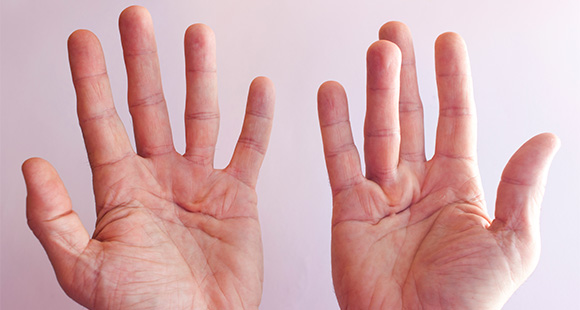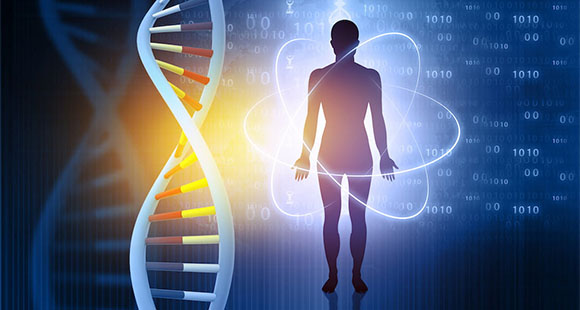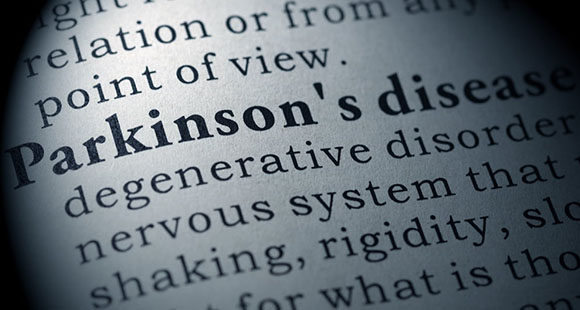
Dupuytren's Disease
and Peyronie's Disease
Dupuytren's Disease, also known as Dupuytren's Contracture, is a condition in which one or more fingers may become permanently bent in a flexed position. It can affect one or multiple fingers on one or both hands, with varying degrees of flexion. In some cases, nodules may also form on the palms of the hands.
Though Dupuytren's Disease is not typically associated with men's health, research has identified a correlation between Dupuytren's Disease, Peyronie's Disease (PD), and Erectile Dysfunction (ED). Dupuytren's Disease may have a genetic component, so if you experience PD and recall older family members with hand contractures, this could indicate a genetic link.
Find out more how MansMatters can help you.
Contact us for a complimentary 20-minute consultation with our men's health specialists.
Arrange a Free Telephone Consultation
Book a Treatment or Diagnosis
Receive More Information
How does Duputren's disease develop?
Dupuytren's Disease develops gradually, often beginning with small nodules visible under the skin of the palms. Over time, it can cause discomfort and make it increasingly difficult to straighten the fingers, leading to challenges with daily tasks like holding a cup.
Like Peyronie's Disease (PD), Dupuytren's Disease (DD) is a connective tissue disorder characterised by the development of a non-cancerous fibrous plaque. In PD, this manifests as a curvature in the erection, while in Dupuytren's Contracture, it affects the hand.
The connection between Dupuytren's Disease and Peyronie's Disease was recognised as early as the 1800s,
See 2011 study published in the International Journal of Impotence Research that investigates the correlation between PD and ED.
Additionally, men with Dupuytren's Disease may experience Erectile Dysfunction (ED). A common factor is an increased level of collagen, which can cause tissues to thicken and harden. In Dupuytren's Disease, older collagen proteins may accumulate, leading to stiffer tissues. In some cases, this may affect other areas by forming scar tissue, which can reduce blood flow, potentially contributing to ED.



Early-Stage Dupuytren's Disease
In the early stages of Dupuytren's Disease, treatments such as extracorporeal shockwave therapy and extracorporeal magnetotransduction therapy (EMTT) may offer effective options for managing the condition.
These innovative therapies are designed to help break down plaques and support healthy blood flow in the affected areas. Combined with manual exercises, these treatments may improve the condition and potentially reduce the need for surgery.
For cases of advanced Dupuytren's Disease, we work with Professor Carlson in Germany, who provides combined surgical and shockwave therapy as part of a comprehensive approach
Dupuytren's Disease and Peyronie's Disease FAQs
What Is Dupuytren’s Disease?
Dupuytren’s Disease is a connective tissue disorder which leads to the development of fibrous plaques in the fingers. Dupuytren’s Disease causes severe curvature in one or more fingers.
What Is The Difference Between Dupuytren’s Disease and Dupuytren’s Contracture?
Dupuytren’s Disease and Dupuytren’s contracture are exactly the same condition.
What Are The Consequences Of Dupuytren’s Disease?
Due to the severe curvature of fingers caused by Dupuytren’s Disease, doing simple tasks with the hand can become extremely difficult or even impossible. Holding a mobile phone or a cup of tea may eventually become impossible due to Dupuytren’s contracture.
How Does Dupuytren’s Disease Occur?
Exact causes of Dupuytren’s Disease are still not clear, but people with diabetes, cardiovascular issues, and alcoholism are more likely to develop and experience Dupuytren’s Disease than others. It can also be a genetic issue especially in Caucasian males
How Do I Know I Have Dupuytren’s Disease?
You may have trouble laying your hand flat on a table, you may see one or multiple small lumps in your palm and over time these lumps may get thicker and tighter, you may see your fingers are getting curved or bent and you may start to lose your ability to easily control items with your hand. These are some of the common symptoms of this disease. If you start to encounter these problems, then there is a high chance that you may be suffering from this issue.
Are Peyronie’s Disease and Dupuytren’s Disease Correlated?
Peyronie’s disease and Dupuytren’s Disease are often comorbid. Both issues can occur genetically and are identified as connective tissue disorders. Plus, both issues lead to the development of fibrous plaques.
How Can Dupuytren’s Disease Cause ED?
Men with Dupuytren’s Disease are more likely to develop Peyronie’s Disease in their penis. Due to PD, blood flow is restricted within the penile tissues and thus results in ED.
Is Dupuytren’s Disease Treatable?
Treatment of Dupuytren’s Disease is complex. There is no straightforward cure for this issue. But with proper treatments the symptoms of this condition can be improved effectively. Dupuytren’s Disease can be treated non-invasively with manual therapy and shockwave therapy.
What Are the Treatment Procedures For Dupuytren’s Disease?
If Dupuytren’s Disease is still in its early phase, then our extracorporeal shockwave therapy and extracorporeal magnetotransduction therapy can be very effective in improving its symptoms. But, if it’s in an advanced phase, then surgical procedure may be required alongside extracorporeal shockwave therapy.
Knightsbridge
Richmond
Related Medical Conditions
Lifestyle
Men's Health
Erectile Dysfunction & Other Conditions
Useful Links
MansMatters is a Division of:

Privacy Policy | Terms & Conditions
















